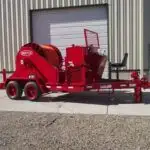Alberta renewable energy surge could power 4,500 jobs

Protective Relay Training - Basic
Our customized live online or in‑person group training can be delivered to your staff at your location.

- Live Online
- 12 hours Instructor-led
- Group Training Available
Alberta Renewable Energy Boom highlights corporate investments, power purchase agreements, wind and solar capacity gains, grid decarbonization, and job growth, adding 2 GW and $3.7B construction since 2019 in an open electricity market.
Key Points
Alberta's PPA-driven wind and solar surge adds 2 GW, cuts grid emissions, creates jobs, and accelerates private builds.
✅ 2 GW added since 2019 via corporate PPAs
✅ Open electricity market enables direct deals
✅ Strong wind and solar resources boost output
Alberta has seen a massive increase in corporate investment in renewable energy since 2019, and capacity from those deals is set to increase output by two gigawatts — enough to power roughly 1.5 million homes.
“Our analysis shows $3.7 billion worth of renewables construction by 2023 and 4,500 jobs,” Nagwan Al-Guneid, the director of Business Renewables Centre Canada, says.
The centre is an initiative of the environmental think tank Pembina Institute and provides education and guidance for companies looking to invest in renewable energy or energy offsets across Canada. Its membership is made up of renewable energy companies.
The addition of two gigawatts is over two times the amount of renewable energy added to the grid between 2010 and 2017, according to the Canadian Energy Regulator.
We’re tripling our Prairies coverage
The Narwhal’s newly minted Prairies bureau is here to bring you stories on energy and the environment you won’t find anywhere else. Stay tapped in by signing up for a weekly dose of our ad‑free, independent journalism.
“This is driven directly by what we call power purchase agreements,” Al-Guneid says. “We have companies from across the country coming to Alberta.”
So far this year, 191 megawatts of renewable energy will be added through purchase agreements, according to the Business Renewables Centre, as diversified energy sources can make better projects overall.
Alberta’s electricity system is unique in Canada — an open market where companies can ink deals directly with private power producers to sell renewable energy and buy a set amount of electricity produced each year, either for use or for offset credits. The financial security provided by those contracts helps producers build out more renewable projects without market risks. Purchasers get cheap renewable energy or credits to meet internal or external emissions goals.
It differs from other provinces, many of which rely on large hydro capacity and where there is a monopoly, often government-owned, on power supply.
In those provinces, investment in renewables largely depends on whether the company with the monopoly is in a buying mood, says Blake Shaffer, an economics professor at the University of Calgary who studies electricity markets.
That’s not the case in Alberta, where the only real regulatory hurdle is applying to connect a project to the grid.
“Once that’s approved, you can just go ahead and build it, and you can sell it,” Shaffer says.
That sort of flexibility has attracted some big investments, including two deals with Amazon in 2021 to purchase 455 megawatts worth of solar power from Calgary-based Greengate Power. There are also big investments from oil companies looking to offset emissions.
The investments are allowing Alberta to decarbonize its grid, largely with the backing of the private sector.
Shaffer says Alberta is the “renewables capital in Canada,” a powerhouse in both green and fossil energy by many measures.
“That just shocks people because of course their association with Alberta is nothing about renewables, but oil and gas,” Shaffer says. “But it really is the investment centre for renewables in the entire country right now.”
Alberta has ‘embarrassing’ riches in wind energy and solar power
It’s not just the market that is driving Alberta’s renewables boom. According to Shaffer there are three other key factors: an embarrassment of wind and solar riches, the need to transition away from a traditionally dirty, coal-reliant grid and the current high costs of energy.
Shaffer says the strong and seemingly non-stop winds coming off the foothills of the Rockies in the southwest of the province mean wind power is increasingly competitive and each turbine produces more energy compared to other areas. The same is true for solar, with an abundance of sunny days.
“Southern Alberta and southern Saskatchewan have the best solar insolation,” he says. “You put a panel in Vancouver, or you put a panel in Medicine Hat, and you’re gonna get about 50 per cent more energy out of that panel in Medicine Hat, and they’re gonna cost you the same.”
The spark that set off the surge in investments wasn’t strictly an open-market mechanism. Under the previous NDP government, the province brought in a program that allowed private producers to compete for government contracts, with some solar facilities contracted below natural gas demonstrating cost advantages.
The government agreed to a certain price and the producers were then allowed to sell their electricity on the open market. If the price dropped below what was guaranteed, the province would pay the difference. If, however, the price was higher, the developers would pay the difference to the government.















